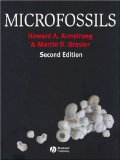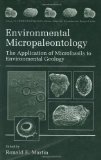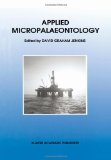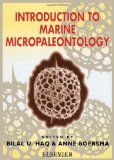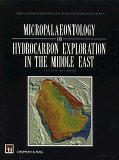Micropaleontology
- 24 Coloquio Europeo de Micropaleontología
- 2nd international conference on Geologic Problem Solving with Microfossils (March 15 - 18, 2009, University of Houston, Texas)
- Berriasian and Valanginian calpionellids from the Ticha Formation of the East Fore-Balkan (Bulgaria)

- Bremen University - Division of Micropalaeontology
- Calpionellid and Nannoconid Stratigraphy and Microfacies of Limestones at the Tithonian–Berriasian Boundary in the Sierra Del Infierno (Western Cuba)

- Calpionellid Zonation in North-Western Anatolia (Turkey) and Calibration of the Stratigraphic Ranges of Some Benthic Foraminifera at the Jurassic-Cretaceous Boundary

- Commission Internationale de Microflore du Paléozoique
- Electronic Microfossil Image Database System (EMIDAS)
- Grupo de Micropaleontología - Área de Paleontología de la Universidad de Zaragoza
- Interpreting Paleoenvironments With Microfossils
- Learning from the fossil record
- Manuel de Micropaléontologie

- Marine Micropaleontology G233
- Microfossil
- Microfossil Type Collection Catalog
- Microfossils
- Microfossils
- Microfossils
- MicroPal
- Micropaleontological preparation techniques and analyses

- Micropaleontology and Biostratigraphy Department - Polish Academy of Sciences
- Micropaleontology at the University of Bonn: Langer Lab - primary research areas focus on the evolutionary history and organismic paleobiology of microscopic organisms and protists (foraminifera) in particular. This interest involves the study of the ecology, biogeography, molecular phylogeny and biology of fossil and living species.
- If you are studying Micropalaeontology or Palaeontology, you will most likely have a lot of work sheets and references you need to print out. If you use a lot of printables, make sure you have the best printer ink for your printer. Find a huge selection of colored and black and white printer ink online.
- Micropalaeontology - Palaeontology Institute, Museum of Natural History Berlin
- Micropaleontology Blog
- Micropaleontological Reference Centers (MRCS)
- Micropalaeontology Group at ETH Zentrum, Zurich
- Micropaleontology Press
- Micropaleontology Reference Collections
- Microphotography of Arizona Fossils
- Monterey Formation - Microfossils
- NAMS - North American Micropaleontology Section of the Society for Sedimentary Geology
- NHM Dept. of Palaeontology Micropalaeontology Division
- Towards a standard calpionellid zonation of the Mediterranean Realm (Tithonian to Valanginian)

- Towards a standard Tithonian to Valanginian calpionellid zonation of the Tethyan Realm

- Using Microfossils In Petroleum Exploration
- Yahoo! Groups: microfossils - Dedicated to microfossils as a hobby. The group includes but is not limited to foraminifers and ostracods. Techniques, localities, identification, photography are all included.
Books about micropaleontology
